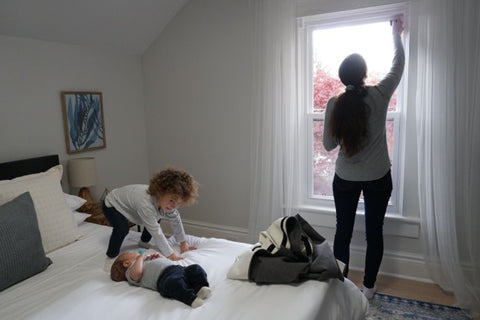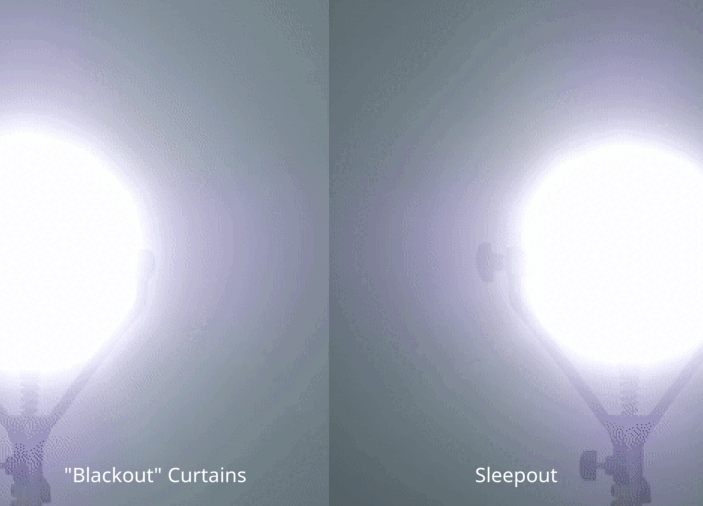Navigating the world of baby sleep can be daunting, especially when it comes to understanding wake windows and establishing healthy sleep patterns for your little one. As a parent looking for answers, you're not alone in facing challenges when trying to create a consistent sleep schedule for your 4-month-old. Let's dive into the world of wake windows and learn how to manage them effectively for improved sleep and overall development.
How Long Should a 4-Month-Old Be Awake Between Naps?
For 4-month-olds, the ideal wake window generally ranges from 1.5 to 2.5 hours. However, it's crucial to understand your baby's unique sleep needs and cues, as each baby is different. Consider factors like the quality of their previous nap or their level of activity during the day, as these can also influence how long they can stay awake.
Maintaining consistent wake windows can lead to improved sleep and overall development. A consistent sleep schedule allows your baby to establish a healthy sleep pattern, and it can also help prevent overtiredness or insufficient sleep. Consistent wake windows can also make it easier for you to plan your day and establish a predictable routine for your family. Furthermore, by being consistent, you're fostering a sense of security and familiarity for your baby, which can contribute to their emotional well-being.
When Should the Last Nap Be for a 4-Month-Old?
The timing of the last nap depends on your baby's sleep schedule and individual needs. Generally, the last nap should end around 4 to 4.5 hours before bedtime. This timing ensures that your baby has enough time to build up sleep pressure before it's time for nighttime sleep, but not so much that they become overtired.
However, it's important to remember that each baby is different, and the ideal timing for the last nap may vary depending on factors such as your baby's sleep needs, daily routine, and overall sleep schedule. Be prepared to adjust the timing of the last nap as needed. It's also essential to consider your family's schedule and commitments, as these factors can influence the timing and structure of your baby's sleep routine. By being flexible and responsive to your baby's needs, you can better support their sleep and development.
How to Make a 5-Month Old's Wake Windows Consistent
To establish and maintain consistent wake windows, follow these practical tips and strategies:
- Observe your baby's sleep cues: Pay close attention to your baby's sleep cues, such as yawning, rubbing eyes, or fussiness. These cues can help you determine when your baby is ready for sleep and adjust the schedule as needed. By being responsive to your baby's cues, you can ensure that their wake windows align with their natural sleep needs.
- Be flexible and adapt the schedule: As your baby grows and develops, their sleep needs may change. Be prepared to adapt the wake windows and sleep schedule accordingly. Monitor your baby's sleep patterns and make adjustments when necessary to maintain consistency and support their overall development.
- Implement routines and rituals: Routines and rituals play a vital role in promoting consistent sleep patterns. Establish a consistent bedtime routine, such as a warm bath, reading a book, or singing lullabies, to help your baby wind down and signal that it's time for sleep. Similarly, develop a predictable naptime routine to make it easier for your baby to transition from wakefulness to sleep.
- Prioritize daytime naps: Ensure your baby has ample opportunities to nap during the day, as daytime sleep can directly impact nighttime sleep quality. By focusing on consistent wake windows and prioritizing naps, you can help your baby establish a healthy sleep pattern that supports their growth and development.
- Communicate with caregivers: If your baby spends time with other caregivers, such as grandparents or a daycare provider, ensure that they are aware of your baby's wake windows and sleep schedule. Consistency across all caregivers can help reinforce your baby's sleep patterns and support their overall well-being.
- Create a suitable sleep environment: A calming and comfortable sleep environment is crucial for establishing consistent wake windows. High quality blackout curtains can help create the ideal atmosphere by blocking out light and external distractions. These curtains can also help regulate the room's temperature, ensuring that your baby is comfortable and ready to rest during their designated sleep times.
By implementing these tips and strategies, you can establish and maintain consistent wake windows for your baby, promoting better sleep and supporting their overall development.
You've Got This, Mom!
As your baby develops, their sleep requirements will evolve. It's normal to feel overwhelmed, but remember that you are the one who knows your baby best. Understanding and managing wake windows for your 4-month-old is essential for establishing healthy sleep patterns and supporting their overall development. By implementing the strategies discussed, you can create a more consistent sleep schedule for your little one.
Take the next step in creating a restful environment for your baby by investing in the most recommended blackout curtain by sleep specialists. With the help of these high-quality curtains, you can ensure your baby gets the best sleep possible. Use code WELCOME10 at checkout for $10 off and experience the difference a great night's sleep can make for you and your little one.






